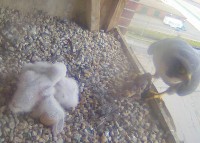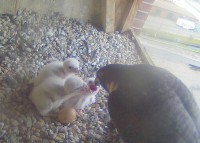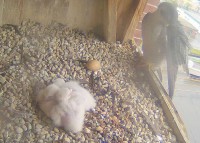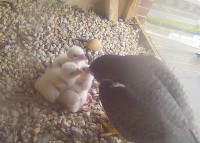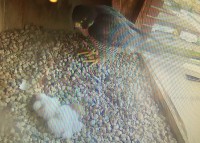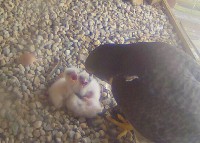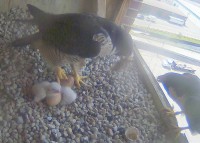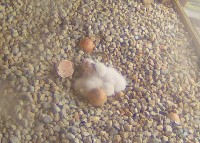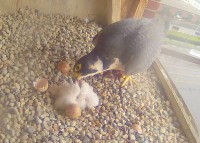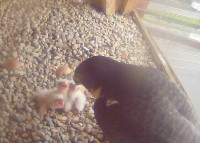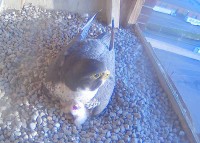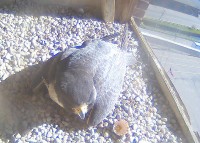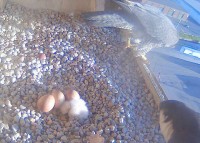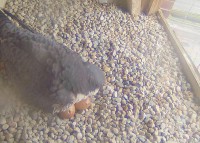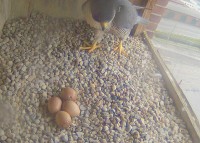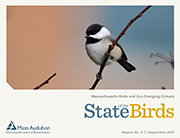Lawrence Peregrines: Day 11
May 24, 2018 in In the Nest Box, lawrence peregrines, Peregrine Falcons Eastern Massachusetts, Peregrine Falcons Massachusetts
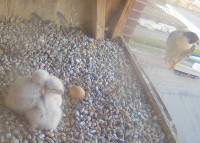 The peregrines started the day off under clear skies and bright sun, calm winds, and the temp at 53F. The day ahead calls for mostly sunny skies, with a high near 69. Light north wind increasing to 5 to 9 mph in the morning. Just before 5:30 AM, the female was seen hovering near the chicks but not really brooding them. The little ones continue to stay close ton one another in a constant huddle formation. By 5:30, the female moved out to the perch pole, keeping an eye on her chicks but remaining very close. Finally, around 6:30 AM, she returned to the nest box with prey in talons and feed the hungry little ones!
The peregrines started the day off under clear skies and bright sun, calm winds, and the temp at 53F. The day ahead calls for mostly sunny skies, with a high near 69. Light north wind increasing to 5 to 9 mph in the morning. Just before 5:30 AM, the female was seen hovering near the chicks but not really brooding them. The little ones continue to stay close ton one another in a constant huddle formation. By 5:30, the female moved out to the perch pole, keeping an eye on her chicks but remaining very close. Finally, around 6:30 AM, she returned to the nest box with prey in talons and feed the hungry little ones!
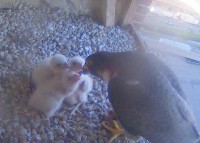 By day 11, the beak is already beginning to acquire a slightly yellow tinge, as opposed to the pink color it has had to this point in the chick’s development. In regard to feeding behavior, hungry chicks solicit even if the adult arrives without food, but when satiated they remain indifferent. R. W. Nelson observed that chicks tend to form a semi-circle in front of the parent or to one side and all received portions of the prey item. Another researcher found that each chick was fed in turn until satiated, when it dropped back and was replaced by the next in line. After 10-12 days, chicks which called most received the most food
By day 11, the beak is already beginning to acquire a slightly yellow tinge, as opposed to the pink color it has had to this point in the chick’s development. In regard to feeding behavior, hungry chicks solicit even if the adult arrives without food, but when satiated they remain indifferent. R. W. Nelson observed that chicks tend to form a semi-circle in front of the parent or to one side and all received portions of the prey item. Another researcher found that each chick was fed in turn until satiated, when it dropped back and was replaced by the next in line. After 10-12 days, chicks which called most received the most food
Literature cited:
Ratcliffe, D. 1993. The Peregrine Falcon. 2nd ed. Carlton, England: T. and A. D. Poyser.
The Canadian Peregrine Foundation, Peregrine Falcon Development – Age Guide; http://www.peregrine-foundation.ca/info/ageguide.html
